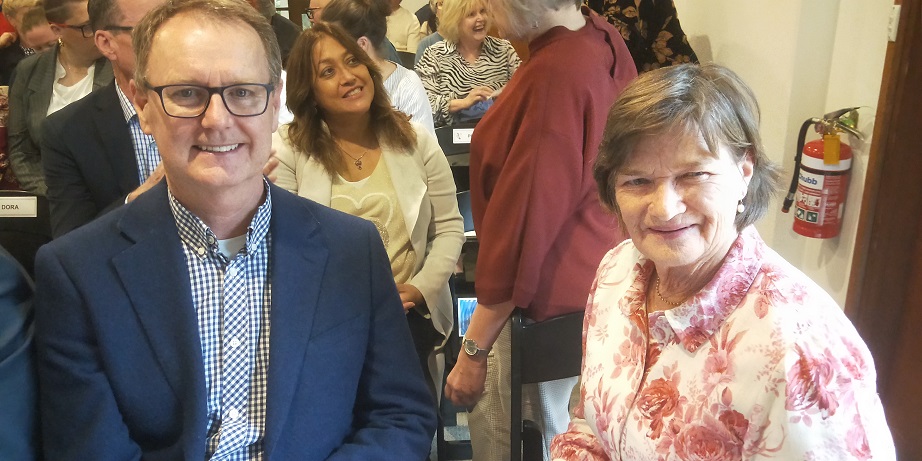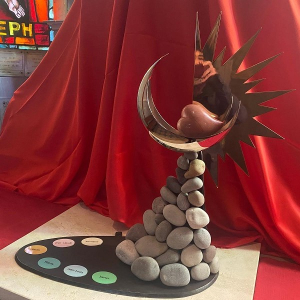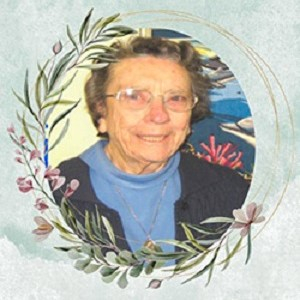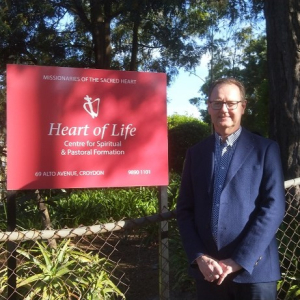Peter MALONE
Blood Quantum
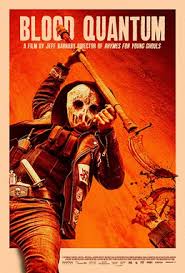
BLOOD QUANTUM
US, 2019, 98 minutes, Colour.
Michael Greyeyes, Elle Maija Tailfeathers, Forest Goodluck, Kiowa Gordon, Gary Farmer.
Directed by Jeff Barnaby.
This is another zombie film using all the conventions of zombie horror. And there is an indication in the title, the focus on blood.
However, it is a zombie film with a difference. A Canadian production. And the focus is on a Native American community.
The first part of the film establishes the community and the variety of characters, there is the father, fishing, cutting the salmon, and the salmon coming alive, his putting them in a box, then the visit of his son, the sheriff, and the salmon moving again. The character of this sheriff is strong, picking up calls, the rabid dog and shooting it, then finding it in the trunk of his car. There is also the relationship with his ex-wife, communicating with her, the introduction to the two boys, one on the bridge and tormenting drivers, the other surly and in jail. With this setting, there is a visit to a house, and a man berserk, violence, and biting the characters. He is a zombie.
Then the action moves forward six months.
There is the expected tension with a community affected by zombies. But, here is the difference with this story. The Native Americans are immune from the zombies while they can suffer pain inflicted by humans. The community is in chaos, the sheriff trying to keep order, helped by his father, one of his sons with his pregnant girlfriend, the other remaining surly.
Which means the latter part of the film shows a lot of the zombie horror, the non-Native Americans being infected, biting, confrontations, their being killed. In the meantime, there are many attacks on the Native Americans but their not dying.
Serious drama the end, the attempts to find a boat to escape the community, failures with the boats, the pregnant woman giving birth but her being infected and having to be killed, the survivors sailing away to an uncertain future.
The same, but different.
Emoh Ruo
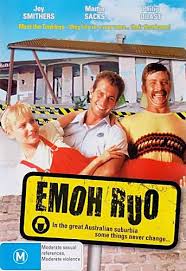
EMOH RUO
Australia, 1985, 93 minutes, Colour.
Joy Smithers, Martin Sacks, Philip Quast, Genevieve Mooey, Max Phipps, Jack Ellis, Bill Young.
Directed by Denny Lawrence.
Australians would know that the title of the film, Emoh Ruo, is Our Home spelt backwards. And, over the years, owning one’s own home is the Australian dream. (12 years later, one of the major film affirmations of Australians owning their own home despite difficulties were seen in the classic comedy, The Castle.)
The film opens with a family, parents and son, living on the coast, in a caravan park. The father is happy working on his motorboat. His wife is itching to move. And, there are the persuaders, especially with shonky deals.
When the move actually happens, the family finds themselves on the outer fringes of the city, difficult neighbours, the house not what they imagined. The husband begins to build a barbecue – which is the salvation of the family because when they decide to move out, the house literally collapses, but they move to the coast again and the barbecue takes off. A successful business venture.
- Australian comedy? The 1980s? Perennial?
- The Australian family, realistic, satirical, foibles, gentle? Audiences identifying?
- The Sydney settings, the beaches, the western suburbs, the city and authenticity, the coast? The interiors, caravan, new house? The musical score, variety, the songs? The title, Our Home in reverse, the Australian dream of the home, the heritage, the facts, tongue in cheek treatment, advertising, dealers, loans, aspirations, the effect?
- The opening, Australia, Margaret, York, Tregado and the effect? Les and the ads? The effect on people?
- Des and Terri, the Harper site, the caravan park, the family, oversee, the showers, the barbecue and the rain? The transition to the suburbs, the Jerry built house, the difficulties, furniture, the final collapse?
- Des and Terri, the relationship, Des and the motorboat, his work, Terri and her aspirations? Jack, part of the family?
- The pressure to buy a home, Sam Tregado and his pressures? Des, not wanting to move, the boat? Terri, wanting to move, the tension between them?
- Des’s decision, selling the boat, the house, the move, the outer suburbs, difficulties with the neighbours?
- The difficulty of settling in, not the Australian dream, difficulties between husband and wife, Des and his building the barbecue?
- Moving to the happy ending, moving out of the house, the collapse, the saving of the family, and the prosperity with the new barbecue?
Buckingham Murders, The
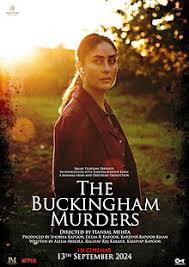
THE BUCKINGHAM MURDERS
India, 2024, 106 minutes, Colour.
Kareena Kapoor, Ash Tandon, Ranveer Brar Keith Allen, Prabhleen Sandhu, Manish Gandhi, Rahul Sidhu, Kapil Redekar.
Directed by Hansal Mehta.
This is an Indian production, financed, range of Indian actors led by one of the most famous actresses in India, Kareena Kapoor. It was filmed in England, using both English and Hindi – however, the Netflix release is complete Hindi dialogue.
The film opens with the shocking killing by a drug addict of people in the bowling alley, especially the young son of police Inspector, Jass Bamhra, played by Kapoor. Devastated, she transfers to the police department in High Wycombe and is immediately asked to participate in the investigation of the murdered 10-year-old boy.
This means that the film works as police investigation, a great deal of screenplay attention to the police precinct, the variety of perso the nnel, their interactions, the methods, the uncovering of the truth. It also means that the film works as a murder mystery. And, quite a number of twists in merge and, for most audiences, the ultimate villain will be more than a surprise.
The film explores tensions between migrants to the UK from the subcontinent, the range of different cultures and religion, Hindu, Sikh, Muslim.
Jass remains deadly serious throughout, a touch of relief as she remembers happy times with her son. She is also aggressive, having punched the killer at the opening of the film, and also attacking one of her fellow officers who is very prickly in his work with her. He is also shown at the bedside of his sister, hospitalised with severe drug overdose.
There is the focus on the family of the dead boy, his being adopted, the difficulties of his father and antagonism towards a former partner. There is the put upon mother.
Eventually, a suspect is arrested, interrogated, a confession. But, Jass is not satisfied and pursues her investigation, uncovering quite a number of further complications raising issues of drug deals, boys used as couriers, disapproving of homosexual relationships…
And, there is a surprise conclusion to the resolving of the mystery.
- An Indian production, filmed in England, Hindi and English (Hindi with English subtitles for Netflix)?
- The title, police procedural film, murder mystery? Expectations of police work, detection? Murder mystery, victim, possible suspects, plot twists, unexpected guilty?
- The background of race riots in Leicester and other cities, racial issues? Again pervading the film? Migrants from the subcontinent, Hindu,Sikh, Muslim?
- The opening, the intensity of the shooting, the bowling alley, the glint in the eye of the killer, the victims? In court, suit and tie, addict, his self pitying plea that he was ignored, his anger, shooting?
- Jass Bamhra, in court, serious, the death of her son, the verdict, her physically attacking the killer? Her grief, flashbacks throughout the film, the grief and anger pervading the film, her work as a detective?
- Her relationship with her father, the conversation about her maturity when young, her father regretting she didn’t have a childhood, the death of her mother? Her abilities, joining the police? Her decision for a transfer, a lesser rank? Her going to High Wycombe?
- Her arrival, Miller in charge, the assignment, the murder of a boy, her wanting out, later demanding in? The other members of the force, Hardy and his working with her, the multiracial staff, black, white, men, women?
- The search for the boy, everyone in the park, his eventually being found, in the car? His parents, their situation, the father and his collaboration in the business, religious differences, losing customers, atmosphere of feud? Sikh? Antagonism towards Muslims? The later confrontations in the street? His wife, quiet, sad, put upon? The later interviews, his self-assertion, the revelation of his affair and meetings, that he was violent towards his wife, son as adopted, age, insurance policy and its being blocked? Suspicions on him despite his protestations?
- The finding of the body, the autopsy, DNA and prints? Leads?
- Hardy, confrontation with Saquib, under suspicion, drugs and addiction, his age, his mother being protective, his father and the partnership in business and the consequences?
- Saquib, the interrogations, surly? His friendship with Nadem, his statement and his story, the murdered boy, the drugs, dispute about the payment, so keep and his anger, drowning the boy, the body, the car? Hardy and his harshness, the background of his sister, addiction, in the hospital, vegetable state, his visits, motivations?
- Jass, serious, stern demeanour, the clashes with Hardy, her punching him, transferred to desk work, off the case? Yet her persistence in investigation? Her interview with the parents after the finding of the body?
- Nadem and his arrest, fear for his father, his version of the story?
- Her continued suspicions, about Saquib, getting Miller’s permission to have 10 minutes with him, his surliness, and breaking down his resistance, the twist in the plot, the homosexual relationship between Saquib and Nadem, the kiss, the swimming, their keeping it quiet, family, Nadem and his father the imam?
- Further developments, the Sikhk household, the two brothers, four years in prison, the almost death of Hardy’s sister, his doing the social media programs warning people against drugs? His younger brother, the visualising of his over attention to the wife? The husband, returning, hearing the young man with his wife, attacking him, bashing him to death?
- The suspicions on Hardy, his setting up of Nadem, Nadem’s phone call, in the car, Jass and Miller following, the revelation of the truth about the body, Hardy and the setup, his killing himself?
- The further investigations, interviewing the girlfriend of the husband, the business deals?
- Jass, suspicions, to the airport, the confrontation with the wife, the interrogation, the flashbacks, the different interpretation of her behaviour, her resentments about the boy, her husband, the relationship with the young man, her using him, the flashback to his drowning the boy and leaving him?
Audience interest in the complexities of the plot, social, religious and cultural differences, business differences? The nature of the police detection? The murder mystery, the different involvements? The solution, unexpected?
Scheherezade: Tell Me a Story
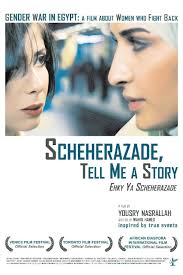
SCHEHERAZADE: TELL ME A STORY
Egypt, 2009, 135 minutes, Colour.
Mona Zakki, Mahmoud Hemeida.
Directed by Yousry Nasrallah.
This is a significant Egyptian film, especially in Egyptian film history, a long tradition, a diminishing of impact, researchers at the beginning of the 21st-century.
The screenplay is by the veteran writer, Wahid Ahmed (hes The Yacoubian Building was seen internationally). He has a place in the tradition of the Egyptian cinema. However, the director was more associated with arthouse cinema.
The social significance of the film is in its portrayal of women in Egyptian society. A long tradition of strong female stars had declined into conventional presentations of women in Egyptian films – wives and mothers, sisters, fiancés… The director of noted that in making his film he was very conscious of misogyny in Egyptian society.
The central character is Hebba, presenting on television, political discussion, a private network, not public. The contrast, her husband is a deputy editor of a government owned paper, with high ambitions. Political leaders indicate to him that his wife’s career could be a hindrance to his promotion, that she should stay away from politics.
At the centre of the film is a new series of talk shows that the wife develops. The comparison is made of her listening to the character from A Thousand and One Nights, Scheherazade, the women telling their stories to stay alive.
As expected, with women’s political issues, misogynistic men attack her, issues of abuse, sexual abuse, religious abuse, and repression, leading to the breakup of her marriage.
This is a film of Egyptian storytelling, Egyptian women’s storytelling, the desperation of some of the stories, their not being heard, and some dire consequences for those who tell them and listen to them.
Rasputin and the Empress
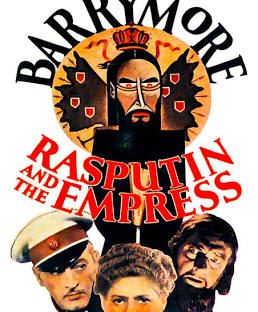
RASPUTIN AND THE EMPRESS
US, 1932, 121 minutes, Black and white.
John Barrymore, Ethel Barrymore, Lionel Barrymore, Ralph Morgan, Tad Alexander, Diana Wynyard, Edward Arnold.
Directed by Richard Boleslawski,
Rasputin, often referred to as the Mad Monk, has a singular place in 20th century Russian history. He had great notoriety, his place in Russian society, his influence at the Royal Court, the devotion of the czarina, his helping the haemophiliac son, his infiltrating himself into the very life of Russia, the court, in politics, mesmerising some, alienating others, a profligate life, finances and political blackmail…
And, the conflict leading to a confrontation, the attempts to kill him, his resistance to dying, but, ultimately, his death. And his living on in the popular imagination.
Already in 1932 there was a German film about him and this MGM production, lavish in its way, sets and decor and costumes, starring the three members of Broadway’s “Royal Family”, John, Athol and Lionel Barrymore, enhanced the Rasputin stories. Later films included Christopher Lee as Rasputin, the Mad Monk, and Alan Rickman, striking in the film, simply called Rasputin.
John Barrymore has the heroic role rather than the villainous role as the Prince who finally confronts Rasputin. Ethel Barrymore is the czarina. But it is Lionel Barrymore who is centre stage as Rasputin, and full stops out for the performance and the style of histrionics.
There are interesting supporting roles for Ralph Morgan is the Czar and Edward Arnold as the consulting doctor, especially for the young prince and his haemophilia.
MGM was involved in a court case concerning the presentation of a Princess, her devotion to Rasputin, an alleged rape and its consequences. The film's inaccurate portrayal of Prince Felix Yusupov and his wife Princess Irina (renamed "Prince Chegodieff" and "Princess Natasha") resulted in a historically significant lawsuit against MGM and gave rise to the "all persons fictitious disclaimer", which has since become standard in Hollywood works of fiction.
- The fascination of Rasputin in Russian history, his career, reputation, his representations in so many films?
- The reputation of the Barrymore’s, the only film that they appeared in together, but not so many sequences together?
- The black-and-white photography, the recreation of the period, costumes and décor, sets? Musical background? Silent sequences?
- Audience knowledge of Rasputin in the last days of the Czars? The 1900s, World War I, the imminent Bolshevik revolution, the execution of the Royal family?
- The atmosphere of the Royal family, the Palace, pomp and lifestyle? The Czar and his character, leadership? The Czarina, her strength of character, devotion to her children? The young prince, his haemophilia? Prince Paul and his principles, his wife? The film establishing all these characters and their interactions?
- The presence of Rasputin, his background, religious, fanatical, his appearance, his powers, the hypnotising of the young prince, the Prince in his power, his haemophilia? The Czarina and her gratitude? His presence in the court?
- Prince Paul, his stance, principles, opposition to Rasputin? His wife and her devotion, support? The interactions, Rasputin and his schemes, Paul and the confrontations? The ultimate buildup, the dinner, Rasputin and his powers, the poison, the guns, the river?
- The portrait of Rasputin, his mental state, his mesmerising powers, gaining dependence? Political influence and presence? Financial issues? Gaining power, information, blackmailing?
- The drama of the Princess and her support, the question of her relationship and the rape in real life, the insertion of a sequence, the court case and this sequence excised?
- As an example of MGM style and filmmaking in the early years of sound?
Klitschko: More than a Fight
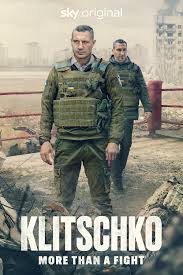
KLITSCHKO: MORE THAN A FIGHT
UK/Germany, 2023, 96 minutes, Colour.
Directed by Kevin Macdonald.
Kevin Macdonald is a longtime British director, Oscar-winning for documentary, the film about the Munich Olympic Games assassinations, One Day in September (2000) but also the director of feature films including The Last King of Scotland.
His focus this time is on the celebrated Ukrainian personality, Detailing Klitschko. The longtime Mayor of Ukrainian capital, Kyiv, since 2014 and continuing during the war with Russia. Which means that the film is interesting for audiences who want to know something more detailed about Ukraine and its experience of the Russian invasion.
However, the significant aspect of his early life is that he was a champion boxer, in Ukraine, but, internationally, in Germany and winning titles in the United States. This film covers a great deal of his boxing background, inserts from footage from the period. Also significant is his brother, Wladimir, also a champion boxer, the two having made names for themselves, especially in the 2000s. Which means the film is of great interest for boxing fans.
The film also fills in the background of their father, strong in the Communist ideology, opposed to the west. But, his becoming a victim of radiation the disaster at Chernobyl. With the fall of the Soviet Empire, the next generation was far more open to the west.
As a personality, Vitaly Klitschko is larger than life, literally in height and weight. In the film highlights his screen presence, offering a whole range of episodes where he meets people, read and listen is, but also some challenges. This is particularly the case after the Russian invasion and its effect on the population of Kyiv.
There is some counterbalance as well as complimentary attitudes towards Klitschko and his personality, the film interspersed with interviews from his children, admiringly, and his ex-wife supportive but also insightful about their relationship and his personality.
A surprising perspective is the interactions between Klitschko President Zelenskyy. When Zelenskyy was a popular comedian, he did imitations and taunts of Klitzschko, especially moments when Klitzschko was comparatively inarticulate and awkward. With the invasion and Zelenskyy’s presidency, there is still a personality clash, Zelenskyy thinking Klitzschko is just a popular and populist leader, while Klitzschko considers Zelenskyy as wanting to centralise power for himself.
McDonald gives enough material to help audiences appreciate this difference – though, it does sometimes seems slanted against the Zelenskyy.
With a documentary being released during the war with Russia and the uncertainty of the outcome, this film will be interesting to watch and reflect on after the conflict between Ukraine and Russia is resolved, whether it be peace and some autonomy for Ukraine, or Russian dominance.
Redemption of a Rogue

REDEMPTION OF A ROGUE
Ireland, 2020, 95 minutes, Colour.
Aaron Monaghan , Aisling O'Mara, Kieran Roche, Pat McCabe, Hugh B. O'Brien, Liz Fitzgibbon, Lorna Quinn.
Directed by Philip Doherty.
This film has been written and directed by prolific Irish playwright, Philip Doherty. And it is set in County Cavan, the county of origin of the director.
The film is very Irish, accent, language, intonations, black humour… And, the film relies on some of its Irish Catholic background, the biblical references, the specific focus on redemption, the image of the Prodigal Son, the return home, the church and the priest, rituals, the Passion and an ironic presentation of a statue of the Virgin Mary coming alive, somewhat raucously.
Aaron Monaghan plays Jimmy Cullen, troubles in the past with his family, harsh father (with flashbacks in 16mm format illustrating the history of the past). The father dies, the stipulation that the funeral be held when the rain stops but, with biblical numbers, it rains for 40 days and 40 nights. Jimmy has various encounters in the town, especially with a raunchy singer in the pub who helps him in various projects.
During the 40 days, Jimmy contemplates suicide, visions, hallucinations, and the practical details of buying a rope to hang himself.
And there is a music background, in the pubs, jazz, and a character called The Blues Man.
The rain does stop but the question is what will happen about the family, the will, and whether Jimmy will have some kind of redemption.
- Title and expectations? Social dimensions of redemption, religious implications of redemption, in Ireland and its Catholic background and imagery?
- The Catholic imagery, the background of Jesus’ Passion, the nature of redemption, the church, the priest, the statue of the Virgin Mary? Of the Prodigal Son?
- The location, County Cavan, the rain, the streets, homes, pubs, the church? Atmosphere?
- Irish humour, banter, black humour?
- The musical background, the songs, the songs as a chorus and comment on the action, characters? The Blues Man? The pub, Masha, the songs?
- The character of Jimmy Cullen, his look, manner of speaking, impact on the audience, memories of him in the town, absent for seven years? His return? His father’s illness and death? The will?
- The filling in of Jimmy’s background, the flashbacks, 16mm format, his story, interactions, family, reputation, leaving?
- The family at home, Damien his brother, his harsh father, their characters, Patricia?
- The father’s will, the condition of the burial, when the rain stopped? The continued rain, its effect, health conditions, the children and starvation? The biblical 40 days of rain? Jimmy and his staying? Despite the conflict with his brother?
- The encounter with Masha, singing, the pub, the attraction, her helping him, her background and behaviour, reputation?
- The church, the biblical references, the role of the priest? In the church, the statue of the Virgin Mary, her coming alive, smoking, the touch of raunchy, her plan?
- Jimmy, fantasies, visions and dreams, suicidal thoughts? The episode of buying the rope, measuring it? Other attempts?
- The scriptural references, the detailed explanation of the 10 plagues of Egypt? The statue of the Infant of Prague, Masha and Jimmy and their plan?
- The sun coming out, the burial, the will, the townspeople, Jimmy, his future? Any redemption?
Issoudun, the Basilica.
Issoudun, the Basilica.
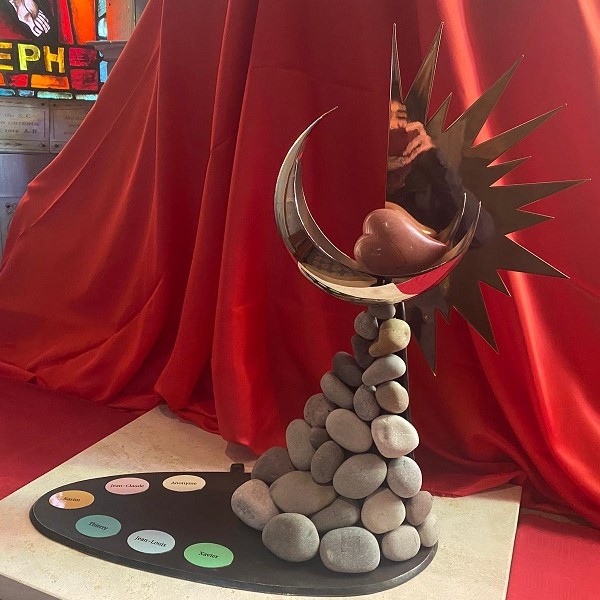
Thanks to Tim Brennan for this news from Daniel Auguie MSC and the French Province.
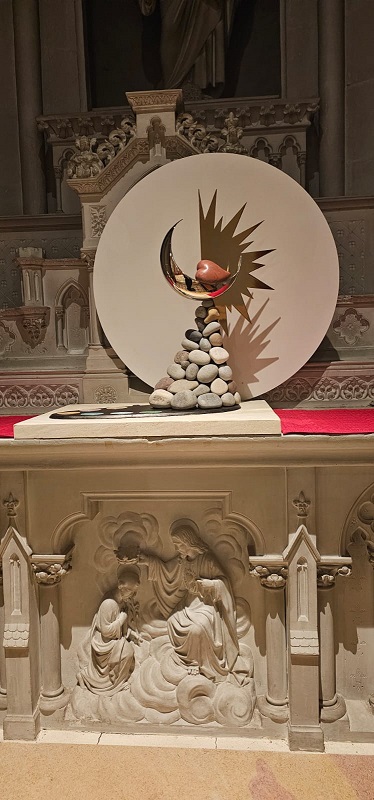
At the recent Assembly, we inaugurated artwork in the Basilica in Issoudun.

It is a memorial to victims of sexual abuse erected in the basilica.
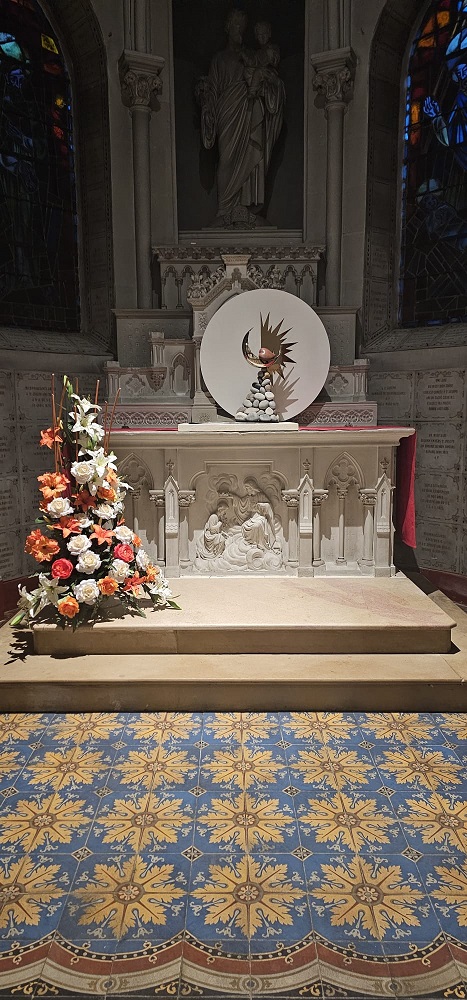
RIP. Sr Marie Ryan OLSH (01.05.1927 - 08.11.2024)
RIP. Sr Marie Ryan OLSH (01.05.1927 - 08.11.2024)
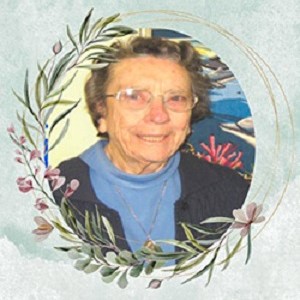
May the Sacred Heart of Jesus be Everywhere Loved!
‘I am with you always even to the end of the world’.
These words from Matthew’s Gospel capture well the driving force behind our dear Sister Marie’s life. Deep faith in the one who called her and loved her unconditionally. At approximately 5.15pm on Friday 8th November, our dear Sister, Marie, came face to face with the one she had lovingly and generously served for over seven decades as a Daughter of Our Lady of the Sacred Heart.
To Marie’s sisters, Nell and Patricia and their families and all her relatives and friends, who loved her so much and are deeply saddened by her death, we offer our deepest sympathy and the support of our prayers. You know well her deep love for you, her pride and joy in you, and her gratitude to you.
Marie was born in Sydney, NSW, on 1st May 1927, the third of five children of Mary and William Ryan. Marie’s family meant everything to her, and she was very close to her parents and four siblings, Vincent, Nell, Francis and Patricia. Marie grew up in a happy home and the Ryan family name was well known around Daceyville. Marie’s parents were generous, salt of the earth people, deeply religious with a strong devotion to the Sacred Heart of Jesus and Our Lady of the Sacred Heart. She recalls special times praying the rosary as a family and being inspired by her father’s faith as he walked from Daceyville to OLSH Randwick, to sing in the choir at 10am Mass.
It can be said of Marie that she had three great loves: her God, her family and her Religious Family. Her family was always very supportive of her and of the Congregation and the not-so-young among us will remember well her brother, Vince, and his willingness to assist the Sisters in whatever way he could.
Marie was an excellent sports woman, and she received many certificates for Physical Education and sport. During the war years she even played Softball for the Australian Koala team against the American soldier’s team, the Bears. Marie enjoyed singing and I can’t forget to mention dancing! She loved attending the CYO dances and a few years back Marie said to me, ‘’When you give my eulogy make sure you say I loved to dance’. And many of us have fond memories of Marie singing ‘Give me land, lots of land, under starry skies above, but don't fence me in. Marie was very social, and she had good friends that she kept throughout her long life. She was faithful to them and they to her. She constantly expressed her appreciation to them.
All of Marie’s education was in Sydney where she was educated by the Daughters of Our Lady of the Sacred Heart. Marie was a decisive child and as a primary student at St Michael’s Daceyville longed to know and make known the love of the Sacred Heart of Jesus. She was convinced that Jesus was calling her to follow him in religious life as a missionary Sister; and after three years working as a stenographer entered the Novitiate at Hartzer Park in1945, at Bowral and when she saw where she was going to live, she said she thought, "Give me land, lots of land ..."
Marie was professed in 1947 and in 1949 she embarked on an extraordinary journey to Nauru and later the Gilbert Islands, known today as Kiribati. Despite the daunting obstacles of scorching heat, limited resources, and the isolation of her mission, Marie was deeply happy as she responded to God’s call to be a missionary in the land of her missionary dreams, Kiribati.
In all, Marie spent just under fifteen years in the Central Pacific, three in Nauru and twelve in Kiribati. Whilst in Nauru and Kiribati, Marie taught in school on several islands: South and North Tarawa, Abemama and Abaiang. She made an invaluable contribution to the lives of the people in Nauru and Kiribati. On her return to Australia Marie never lost her great love for Kiribati as she faithfully ordered, packed and sent packages back to assist the school children in Kiribati. And she was always quick to demonstrate her joy at being able to do the beautiful dances she had learnt there. Her love for the I-Kiribati people remained strong; she was always excited to meet and chat with Sisters returning from Kiribati for holidays.
When Marie returned to Australia, from Kiribati, she continued her ministry as a teacher in many areas throughout Australia, from the Northern Territory to Tasmania. As a teacher Marie was competent and creative with a special interest in those students who found study difficult. Marie had a genuine love for her students and their families, she kept in contact with many of them after they left school and entered the workforce.
After retiring from teaching in the mid-seventies, Marie moved into Parish Pastoral Work. As a pastoral worker in the parish, she was especially sympathetic and compassionate to those she visited. She would always go beyond what was needed to bring comfort to the sick and elderly. She was fondly remembered by the parishioners wherever she worked. In 1986 Marie moved to Hartzer Park when she joined her good friend Sr Lorraine Ryan, (no relation) in the ministry of hospitality and welcome. Later Marie moved to Kensington, and it has been said she had a great ability to put order into disorder with the help of Sr Lorraine Ryan especially when called upon so many times when the Dining Room at Kensington had to be set up for special occasions. This was always done with efficiency and great good humour.
Marie was a people’s person, she loved being with and talking to people on any level. In community Marie generously participated in all aspects of life. She was very welcoming, thoughtful, and hospitable. When Sisters were new to the community, she went out of her way to be helpful making them fell more “at home”.
She loved life, and she was totally committed to everything, her prayer life, her apostolate, her Community, family and friends. Marie took very seriously her commitment to life as an FDNSC. She loved her vocation and expressed that love by her great fidelity. She loved the regular routine that religious life offered.
When it was becoming apparent that Marie’s health was failing and she was asked to transfer to St Joseph’s Aged Care Facility, she accepted the decision with her graciousness. Her warm smile and twinkle in her eye reflected the joy she experienced whenever you visited her at St Joseph’s where she was beautifully cared for until her death.
We thank God for the many gifts given to Sr Marie. We will be ever grateful to William, Mary and the Ryan family for the gift of Marie to our Congregation! We know Marie loved her family greatly and held her siblings close to her heart.
Go in peace dear Marie, united with the one who says ‘Í am with you always even to the end of the world’.
Thank you for your gracious spirit, deep spirituality, and warm smile.
May your courageous soul rest in peace.
Philippa Murphy FDNSC
Provincial Leader
May the Sacred Heart of Jesus be Everywhere Loved!
‘I am with you always even to the end of the world’.
These words from Matthew’s Gospel capture well the driving force behind our dear Sister Marie’s life. Deep faith in the one who called her and loved her unconditionally. At approximately 5.15pm on Friday 8th November, our dear Sister, Marie, came face to face with the one she had lovingly and generously served for over seven decades as a Daughter of Our Lady of the Sacred Heart.
To Marie’s sisters, Nell and Patricia and their families and all her relatives and friends, who loved her so much and are deeply saddened by her death, we offer our deepest sympathy and the support of our prayers. You know well her deep love for you, her pride and joy in you, and her gratitude to you.
Marie was born in Sydney, NSW, on 1st May 1927, the third of five children of Mary and William Ryan. Marie’s family meant everything to her, and she was very close to her parents and four siblings, Vincent, Nell, Francis and Patricia. Marie grew up in a happy home and the Ryan family name was well known around Daceyville. Marie’s parents were generous, salt of the earth people, deeply religious with a strong devotion to the Sacred Heart of Jesus and Our Lady of the Sacred Heart. She recalls special times praying the rosary as a family and being inspired by her father’s faith as he walked from Daceyville to OLSH Randwick, to sing in the choir at 10am Mass.
It can be said of Marie that she had three great loves: her God, her family and her Religious Family. Her family was always very supportive of her and of the Congregation and the not-so-young among us will remember well her brother, Vince, and his willingness to assist the Sisters in whatever way he could.
Marie was an excellent sports woman, and she received many certificates for Physical Education and sport. During the war years she even played Softball for the Australian Koala team against the American soldier’s team, the Bears. Marie enjoyed singing and I can’t forget to mention dancing! She loved attending the CYO dances and a few years back Marie said to me, ‘’When you give my eulogy make sure you say I loved to dance’. And many of us have fond memories of Marie singing ‘Give me land, lots of land, under starry skies above, but don't fence me in. Marie was very social, and she had good friends that she kept throughout her long life. She was faithful to them and they to her. She constantly expressed her appreciation to them.
All of Marie’s education was in Sydney where she was educated by the Daughters of Our Lady of the Sacred Heart. Marie was a decisive child and as a primary student at St Michael’s Daceyville longed to know and make known the love of the Sacred Heart of Jesus. She was convinced that Jesus was calling her to follow him in religious life as a missionary Sister; and after three years working as a stenographer entered the Novitiate at Hartzer Park in1945, at Bowral and when she saw where she was going to live, she said she thought, "Give me land, lots of land ..."
Marie was professed in 1947 and in 1949 she embarked on an extraordinary journey to Nauru and later the Gilbert Islands, known today as Kiribati. Despite the daunting obstacles of scorching heat, limited resources, and the isolation of her mission, Marie was deeply happy as she responded to God’s call to be a missionary in the land of her missionary dreams, Kiribati.
In all, Marie spent just under fifteen years in the Central Pacific, three in Nauru and twelve in Kiribati. Whilst in Nauru and Kiribati, Marie taught in school on several islands: South and North Tarawa, Abemama and Abaiang. She made an invaluable contribution to the lives of the people in Nauru and Kiribati. On her return to Australia Marie never lost her great love for Kiribati as she faithfully ordered, packed and sent packages back to assist the school children in Kiribati. And she was always quick to demonstrate her joy at being able to do the beautiful dances she had learnt there. Her love for the I-Kiribati people remained strong; she was always excited to meet and chat with Sisters returning from Kiribati for holidays.
When Marie returned to Australia, from Kiribati, she continued her ministry as a teacher in many areas throughout Australia, from the Northern Territory to Tasmania. As a teacher Marie was competent and creative with a special interest in those students who found study difficult. Marie had a genuine love for her students and their families, she kept in contact with many of them after they left school and entered the workforce.
After retiring from teaching in the mid-seventies, Marie moved into Parish Pastoral Work. As a pastoral worker in the parish, she was especially sympathetic and compassionate to those she visited. She would always go beyond what was needed to bring comfort to the sick and elderly. She was fondly remembered by the parishioners wherever she worked. In 1986 Marie moved to Hartzer Park when she joined her good friend Sr Lorraine Ryan, (no relation) in the ministry of hospitality and welcome. Later Marie moved to Kensington, and it has been said she had a great ability to put order into disorder with the help of Sr Lorraine Ryan especially when called upon so many times when the Dining Room at Kensington had to be set up for special occasions. This was always done with efficiency and great good humour.
Marie was a people’s person, she loved being with and talking to people on any level. In community Marie generously participated in all aspects of life. She was very welcoming, thoughtful, and hospitable. When Sisters were new to the community, she went out of her way to be helpful making them fell more “at home”.
She loved life, and she was totally committed to everything, her prayer life, her apostolate, her Community, family and friends. Marie took very seriously her commitment to life as an FDNSC. She loved her vocation and expressed that love by her great fidelity. She loved the regular routine that religious life offered.
When it was becoming apparent that Marie’s health was failing and she was asked to transfer to St Joseph’s Aged Care Facility, she accepted the decision with her graciousness. Her warm smile and twinkle in her eye reflected the joy she experienced whenever you visited her at St Joseph’s where she was beautifully cared for until her death.
We thank God for the many gifts given to Sr Marie. We will be ever grateful to William, Mary and the Ryan family for the gift of Marie to our Congregation! We know Marie loved her family greatly and held her siblings close to her heart.
Go in peace dear Marie, united with the one who says ‘Í am with you always even to the end of the world’.
Thank you for your gracious spirit, deep spirituality, and warm smile.
May your courageous soul rest in peace.
Philippa Murphy FDNSC
Provincial Leader
Transition at Heart of Life, Interim Director, Alison McKenzie, to new Director, Peter Hendriks MSC.
Transition at Heart of Life, Interim Director, Alison McKenzie, to new Director, Peter Hendriks MSC.
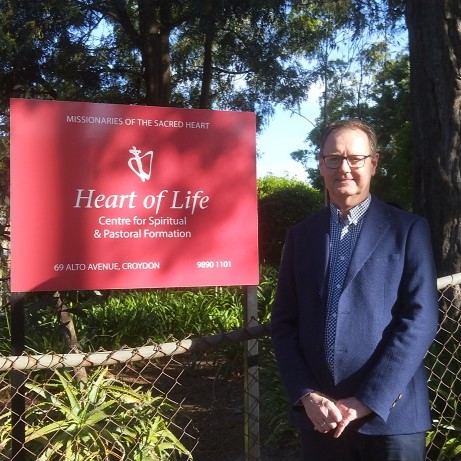
Monday evening November 18th saw the annual Heart of Life Centre Graduation Ceremony.
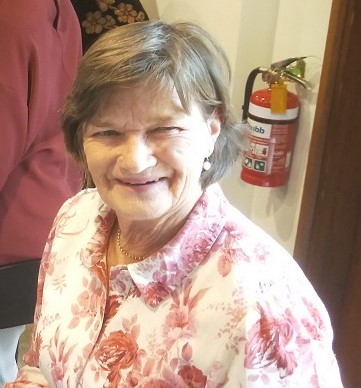
Alison presided with Peter present.
